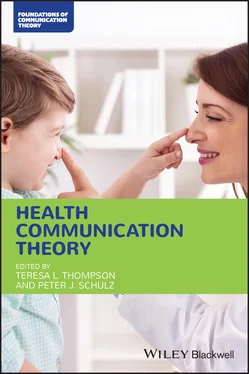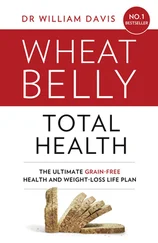1 ...6 7 8 10 11 12 ...22 The second type of involvement identified by Johnson and Eagly (1989) is impression‐relevant involvement. Impression‐relevant involvement refers to concerns about self‐presentation, social desirability, and identity management. High impression‐relevant involved individuals are concerned with “holding an opinion that is socially acceptable” (Johnson and Eagly 1989, p. 291), and often have more flexible or less extreme positions on topics. In contrast to value‐relevant involvement, individuals high in impression‐relevant involvement are motivated to behave in a manner that is considered acceptable by others (Cho and Boster 2005), whereas high value‐relevant involved individuals tend to behave in a way that is consistent with their own beliefs (Lapinski et al. 2017). Correspondingly, high levels of impression‐relevant involvement have been found to be associated with other‐directedness (Cho and Boster 2005), the level to which individuals have concerns for “pleasing others, conforming to the social situation, and masking one’s true feelings” (Briggs, Cheek, and Buss 1980, p. 681). Of the three involvement types, impression‐relevant involvement has received the least amount of academic investigation. Furthermore, research examining impression‐relevant involvement (Lapinski et al. 2017; Marshall et al. 2008; Pfau et al. 2010; Quick and Heiss 2009) has often failed to find support for impression‐relevant involvement’s persuasive function as specified by Johnson and Eagly (1989).
The final type of involvement identified by Johnson and Eagly (1989) is outcome‐relevant involvement. Outcome‐relevant involvement refers to the relevance of the issue to an individual’s important goals or outcomes. In short, if an issue or topic potentially will help an individual achieve some goal, she or he is said to have high outcome‐relevant involvement (Johnson and Eagly 1989). Outcome‐relevant involvement is conceptually similar to Petty and Cacioppo’s (1979) concept of issue involvement, defined as “the extent to which the attitudinal issue under consideration is of personal importance” (p. 1915). Research on the role of outcome‐relevant involvement on persuasion has been somewhat inconsistent, with findings suggesting that outcome‐relevant involvement can both enhance and inhibit attitude change (Cho and Boster 2005; Maio and Olson 1995). These inconsistent findings can be best explained by the elaboration likelihood model (Petty and Cacioppo 1986), which proposes that as outcome‐relevant involvement prompts greater message processing, attitude change should be expected only when strong persuasive messages are presented. In support of this reasoning, research has found that individuals with high outcome‐relevant involvement engage in more information seeking (Cho and Boster 2005; Quick and Heiss 2009) and more objective cognitive processing (Hubbell, Mitchell, and Gee 2001; Levin, Nichols, and Johnson 2000).
Health communicators can benefit by considering audience members’ involvement in an issue, given the central role involvement plays in message processing and attitude change. Formative research into a target audience’s type and level of involvement in an issue allows for subsequent audience segmentation and message tailoring. One illustrating example of this comes from Marshall and colleagues (2008) who examined college students’ impression‐, outcome‐, and value‐relevant involvement for alcohol use (as well as several other health behaviors). Though participants had similar (and relatively high) levels of involvement for alcohol use, Marshall and colleagues (2008) found that outcome‐relevant involvement was positively associated with alcohol use, whereas value‐relevant involvement was negatively associated with alcohol use, and impression‐relevant involvement was unrelated with alcohol use. From a message design standpoint, this negative relationship between value‐relevant involvement and drinking suggests that anti‐drinking messages that resonate with college students’ existing values (e.g. healthy lifestyle) represent a potentially fruitful avenue for health communication efforts. Furthermore, given the positive association between outcome‐relevant involvement and drinking, these results suggest that social marketing efforts will likely benefit from finding new and innovative ways to convey the negative effects of alcohol use, given the existence of perceived positive benefits of alcohol use (e.g. socialization, stress management; Marshall et al. 2008). With an overview of involvement provided, we next move to the concept of health literacy.
Another concept that merits attention in the development of social marketing campaigns and health promotion programs is health literacy, a set of characteristics that allow for the understanding and use of health information to make health decisions (Aldoory 2017). Berkman and colleagues (Berkman, Davis, and McCormack 2010) conducted a review of 13 definitions of health literacy and then proposed a new definition: the degree to which individuals can obtain, process, understand, and communicate about health‐related information needed to make informed health decisions. Given this definition, it is no surprise that lower health literacy is linked to poorer health outcomes and substantial increased costs to the overall health care system (Nielsen‐Bohlman, Panzer, and Kindig 2004; Paasche‐Orlow and Wolf 2007). Paasche‐Orlow and Wolf (2007) developed a framework to demonstrate the causal pathways between limited health literacy and patients’ health outcomes. It is estimated that between one third to one half of US adults have limited health literacy (Nielsen‐Bohlman et al. 2004).
Given the evolution of the concept of health literacy, which was initially strongly tied to math and reading capabilities in the health context, one of the most frequent areas of health communication research focused on health literacy has been around the readability of various kinds of health promotion materials. Weiss (2015) noted that in a search of medical literature from 2000 to 2013 there were at least 160 studies investigating readability of patient education materials, and argued that the consistent finding – the reading demand of patient materials is too high – is well‐established and research should focus on more productive avenues. Other studies have considered everything from informed consent documents (Donovan‐Kicken, Mackert, Guinn, et al. 2012) to patient–provider communication (Hironaka and Paasche‐Orlow 2008) to approaches for improving medication instructions (Katz, Kripalani, and Weiss 2006) to how advertising and journalism professionals understand health literacy (Hinnant and Len‐Rios 2009; Mackert 2011). Finally, in a thoughtful study, Meppelink and colleagues (2015) make the important point that all individuals regardless of their health literacy level benefit from simpler, clearer messages – a universal precautions approach. There is both a solid foundation on which to build regarding the role of health literacy in health communication and social marketing efforts, as well as substantial room for improving the field’s understanding the mechanisms of health literacy on eventual outcomes.
Those interested in health literacy as an individual‐level variable that can affect the potential impact of social marketing efforts and contribute to overall health face several challenges. As already noted, there is a variety of definitions of health literacy, and the different definitions can create confusion and a lack of consensus within the field (Mackert, Champlin, Su, and Guadagno 2015); a recent proposal by the US Department of Health and Human Services to adopt a new definition of health literacy which would emphasize the role of society in providing accessible and comprehensible health information has some potential benefits (e.g. increasing the focus on those delivering health information) but could also exacerbate some of the challenges of a lack of consensus around the definition of health literacy (e.g. the indexing of academic literature focused on health literacy; Ancker, Grossman, and Benda 2019). It is perhaps a natural consequence of lack of consensus around definitions which leads to a host of measures around health literacy, as well as accompanying calls for consensus and better measures of health literacy that reflect newer perspectives on health literacy as an avenue for health promotion (Pleasant, Cabe, Patel, et al. 2015; Pleasant, McKinney, and Rikard 2011). Perhaps the most pressing issue is that there is limited, quality evidence about what kind of interventions can change the negative outcomes associated with limited health literacy (Berkman, Sheridan, Donahue, et al. 2011; Weiss 2015). Focused research on the different steps of building health promotion efforts – from the message design process to audience reception to health outcomes – with health literacy as a consideration throughout the process will contribute to a growing evidence based of how best to build health literacy and improve the health of those with limited health literacy. Aldoory (2017) lays out a number of existing research gaps and opportunities for future research related to health literacy and health communication. With a discussion of health literacy behind us, we next turn to locus of control by defining the concept and dimensions, as well as discussing how it provides opportunities and challenges to health practitioners.
Читать дальше












